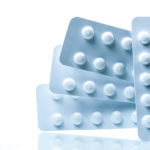
Yeexin Richelle/shutterstock.com
WASHINGTON, D.C.—Despite the value of guidelines, they often “are not read,” said N. Lawrence Edwards, MD, professor of medicine specializing in rheumatology at the University of Florida, at the 2016 ACR/ARHP Annual Meeting talk titled, New & Emerging Therapies for Gout, as part of the ACR Review Course. Or if they are read, they aren’t “remembered very well,” he noted.
During the session, Dr. Edwards gave attendees a kind of guided tour of the latest guideline for gout management, driving home certain points with emphasis and explanation. As one of the authors of the gout guideline released by the ACR in 2012, Dr. Edwards offered tips and insights related to treating severe gout pain and ongoing patient care.1,2
Treatment Strategies
The guideline includes separate and distinct recommendations for the treatment of acute pain and inflammation and for lowering urate. “The urate-lowering therapy has nothing to do with controlling acute pain and inflammation, nor do the anti-inflammatory and pain-controlling mechanisms have any beneficial effect on urate lowering,” he said.
Dr. Edwards outlined a series of tips for clinicians treating patients with gout pain:
- For acute symptoms, therapy should optimally be given in the first 24 hours. Patients should have their medication with them at all times—and know how to use it—for those flares that are “going to happen at 3 in the morning.”
- When treating for an acute flare and pain with non-steroidal anti-inflammatory drugs (NSAIDs), colchicine, glucocorticoids or an IL-1 inhibitor, don’t interrupt urate-lowering therapy.
- Anti-inflammatory prophylaxis, with colchicine, NSAIDs or an IL-1 inhibitor, should be used in all gout patients before starting urate-lowering therapy, usually about a week or two before.
- Treating pain yields slow results. Pain will be reduced only by one-half within 36–48 hours, and patients should be prepared for that. “That’s not a very … encouraging bit of information, because most of these people are in excruciating pain,” Dr. Edwards said.
- If a patient’s pain affects more than one area or if he or she has failed monotherapy, combinations may be used.
- Urate-lowering therapies include allopurinol, febuxostat, probenecid, lesinurad and pegloticase.
Patient Education Benefits
Patient education is “what we do worst in gout,” Dr. Edwards said. But it is hugely important, he added. “The reason patients don’t take their medications is [because] they don’t believe it [will help]—because you haven’t told them why they’re taking this.
“If you’re not going to spend the 20–30–40 minutes to tell the patient about the drug and the disease, make sure they find a source of good unbiased information,” he added.
He also shared some tips for ongoing gout management:
- Be sure not to overemphasize the role of diet, because a patient might go home and try dietary changes before taking medication. “Even on a pretty restrictive diet, you’re not going to orchestrate much more than a 1 mg/dL decrease in their serum urate level,” he added, “and in virtually no patient with gout is that going to be adequate.”
- Patients should be counseled about their urate-level target. “They should know what their current uric acid level is; they should know what their target is. You should be telling them that.” The typical serum urate target is less than 6 mg/dL. For those with more advanced disease or those with tophi, it’s less than 5 mg/dL.
- Urate-lowering therapies should be used for six months—according to the guideline—and definitely for three months after achieving your target. He said it’s important for patients to know that, with urate-lowering therapies, flare is more likely for the first three months of therapy, so they may actually feel like they are getting worse.
‘Even on a pretty restrictive diet, you’re not going to orchestrate much more than a 1 mg/dL decrease in their serum urate level, & in virtually no patient with gout is that going to be adequate.’ —Dr. Edwards
New Therapies Addressed
Dr. Edwards also discussed new and emerging therapies in gout management, particularly concerning allopurinol and dosing for patients of various ethnicities. His series of recommendations included the following:
- Allopurinol dosing has to be escalated especially carefully for those with chronic kidney disease—an increase of 100 mg/dL per month for those at Stage 3 or better, and an increase of 50 mg/dL per month for those with Stage 4 disease. “This is a slow, laborious process; one that’s safe, one that’s good, but it takes a lot of time on your part,” Dr. Edwards said.
- For patients of Asian descent—and possibly for African-American patients—testing for HLA allele B 5801 is needed. Asians are at a much higher risk of allopurinol sensitivity, and African-Americans are also at a higher risk, although not nearly as much as Asians.
- Febuxostat, although more expensive, doesn’t have to be adjusted according to renal function and is generally better tolerated.
- Emerging therapies for prophylaxis and treatment of acute gout include IL-1 inhibitors anakinra, canakinumab and rilonacept and, possibly, a reentry into the market of ACTHar gel, which has much quicker response, Dr. Edwards said.
- For urate-lowering therapy, emerging treatments include ulodesine, which inhibits urate production, and lesinurad, which promotes excretion of urate through the urine.
“There’s been a paradigm shift in the treatment of gout,” Dr. Edwards said. “We no longer treat symptoms. We treat to target.”
Treatment may include steroids and immunosuppressive drugs. And the literature is growing on the use of rituximab.
Thomas R. Collins is a freelance writer living in South Florida.
References
- Khanna D, Fitzgerald JD, Khanna PP, et al. 2012 American College of Rheumatology guidelines for management of gout. Part 1: Systematic nonpharmacologic and pharmacologic therapeutic approaches to hyperuricemia. Arthritis Care Res (Hoboken). 2012 Oct;64(10):1431–1446.
- Khanna D, Khanna PP, Fitzgerald JD, et al. 2012 American College of Rheumatology guidelines for management of gout. Part 2: Therapy and antiinflammatory prophylaxis of acute gouty arthritis. Arthritis Care Res (Hoboken). 2012 Oct;64(10):1447–1461.


